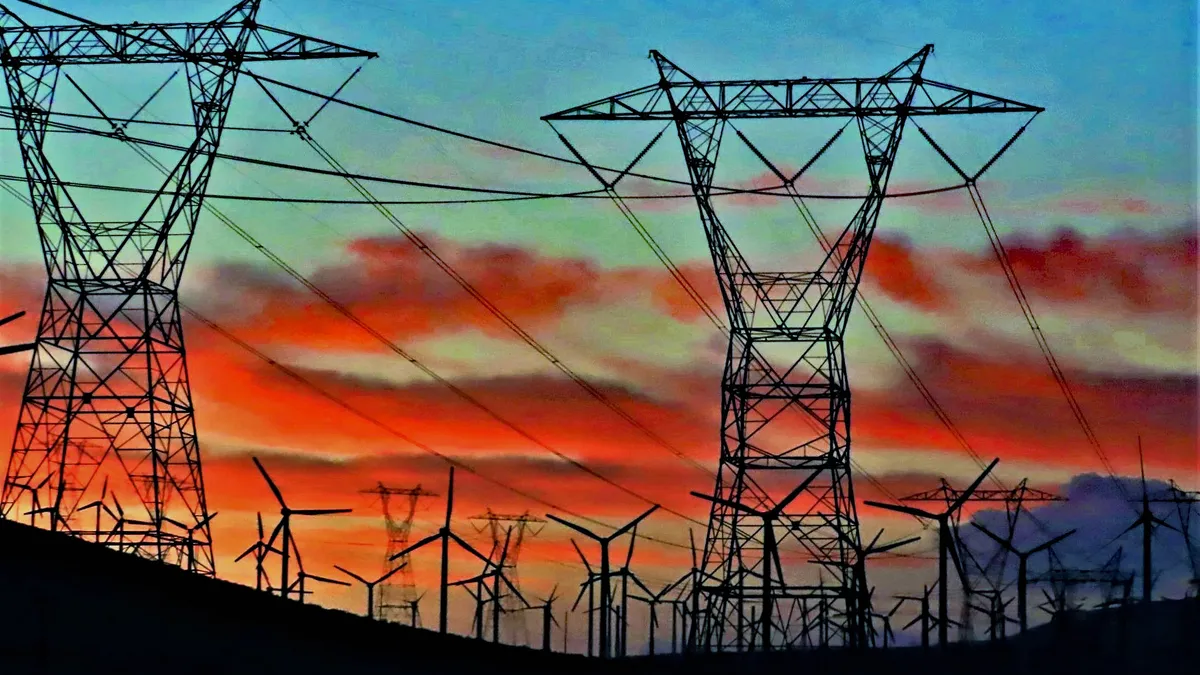Dive Brief:
- California will use $67.5 million in federal infrastructure funds to add energy storage, invest in efficiency and harden its electric grid through a new Community Energy Resilience Investment program, or CERI, announced Monday in a call with U.S. Department of Energy officials.
- The funds are part of $207.6 million DOE will direct to nine states and three tribal nations through grid resilience formula grants funded by the bipartisan infrastructure bill.
- The CERI program will issue a solicitation for grid projects in the first quarter of 2024, with a focus on improving resilience in disadvantaged communities, said David Hochschild, chair of the California Energy Commission.
Dive Insight:
California and other states are increasingly facing extreme weather, underscoring the need for rapid grid investment.
There are more than 50 million Americans “bracing for record heat waves this week,” Energy Secretary Jennifer Granholm noted. “They are counting on the grid to help them stay cool, [but] many people are just relying on outdated and failing electrical equipment."
Parts of southern California are expected to face temperatures in excess of 100 degrees this week.
The state’s CERI program has a “pretty broad mandate,” Hochschild said during the DOE call, and funds could be used for energy efficiency, demand response, storage and other grid upgrades.
“The future runs through the electric grid,” Hochschild said. Along with electrifying homes and other buildings, he said about a quarter of new vehicles sold in the state are electric — adding about 1,000 EVs to the grid each day.
The California Energy Commission will hold a staff workshop, likely in the fourth quarter, to take public comment on CERI program development.
Other state awards detailed by DOE include:
- Texas will receive $60.6 million to identify and address gaps in grid resilience through weatherization, advanced modeling technologies, vegetation management and fuel load strategies;
- Michigan will use almost $15 million from DOE to invest in “last-mile delivery solutions” for low-income customers and improve critical facility resilience through “traditional grid hardening resilience investments.” Funds will also be used to grow the state’s workforce and to support “innovative non-wired alternative projects”;
- Maine will direct $4.4 million to projects that “improve community and economic resilience” by expanding workforce opportunities and modernizing its power system to mitigate disproportionate energy burdens.
Aging grid is a ‘bottleneck,’ say BofA analysts
U.S. grid capacity will need to expand by roughly 60% by 2030, and ultimately triple, for states to meet their climate goals, according to analysts at Bank of America.
Through the bipartisan infrastructure bill and the Inflation Reduction Act, the federal government is investing about $29 billion in the power grid, BofA noted in a July 6 research note. But that will represent just a fraction of needed grid funding.
The U.S. will need to spend $360 billon on transmission through 2030 to meet clean energy goals, BofA analysts said. “Aging grid infrastructure is a bottleneck for electricity demand growth that underpins a near doubling in [transmission and distribution] capex by 2030," they concluded.
Growth in EVs will drive significant new demand for electricity as well as make the grid more complicated to operate, BofA said. Citing research from Boston Consulting Group, analysts estimated a household purchasing an EV could see a 20-50% increase in the electricity consumed.
“The lack of overall investment in the grid is partially due to funding being allocated on a state-by-state basis," BofA said. “At the moment, states have no incentives to invest in the grid outside their own borders. Coupled with the lack of major federal investment before the [infrastructure bill] and IRA, major investments will be needed to modernize the grid.”
Correction: We have updated this story to correct details about an upcoming staff meeting on CERI program development.















